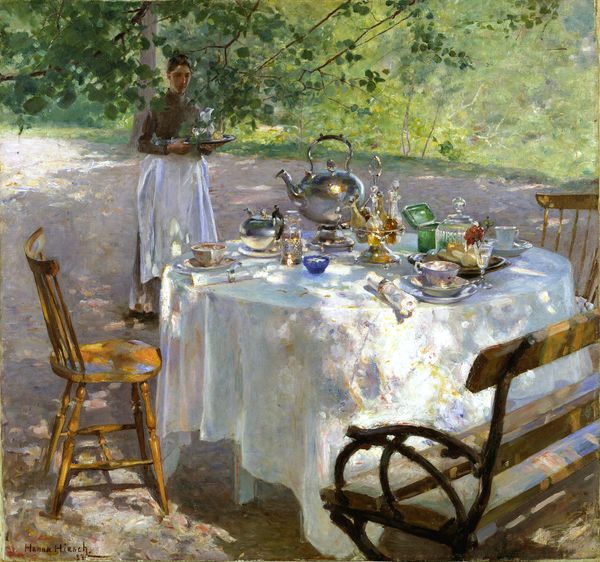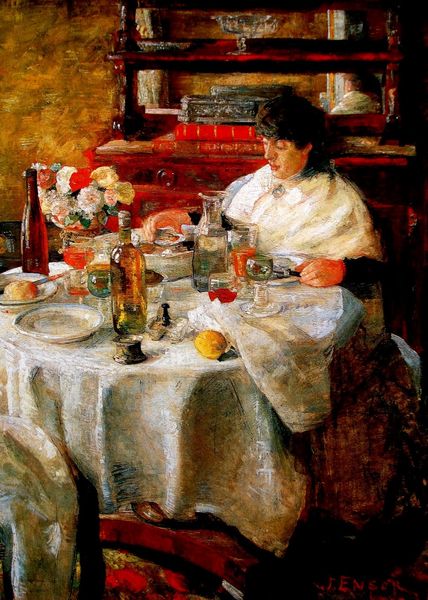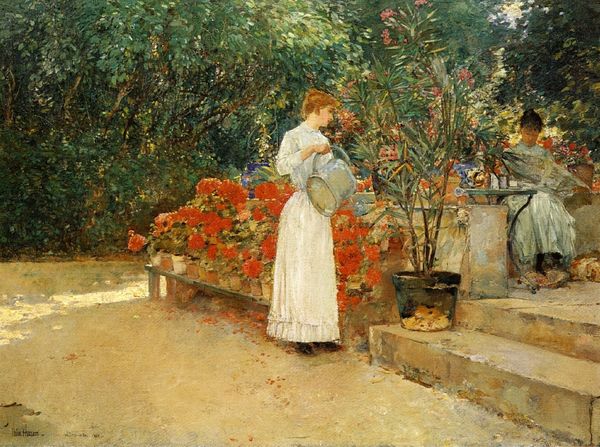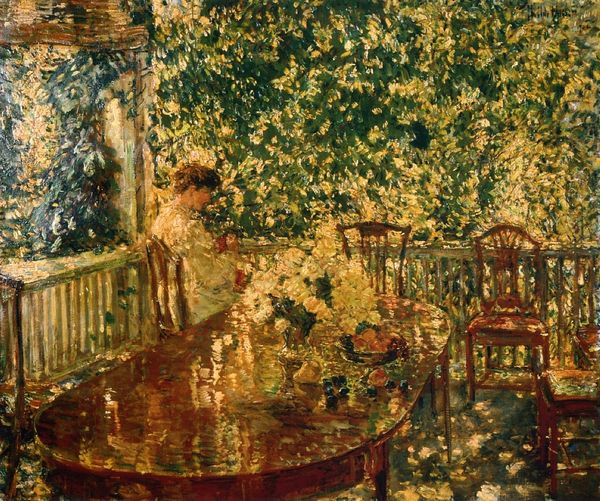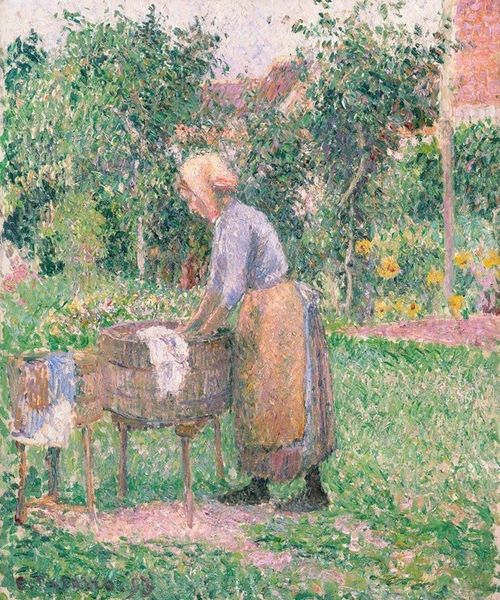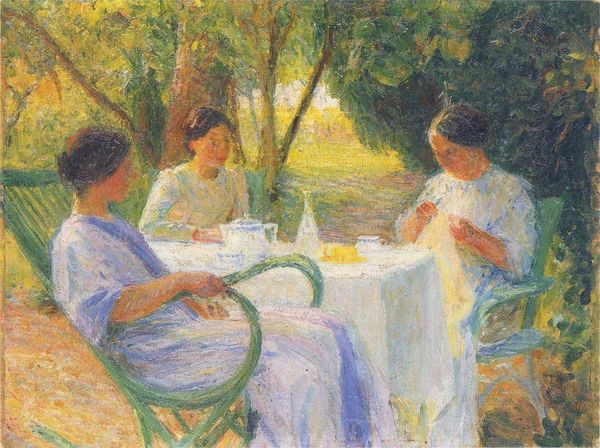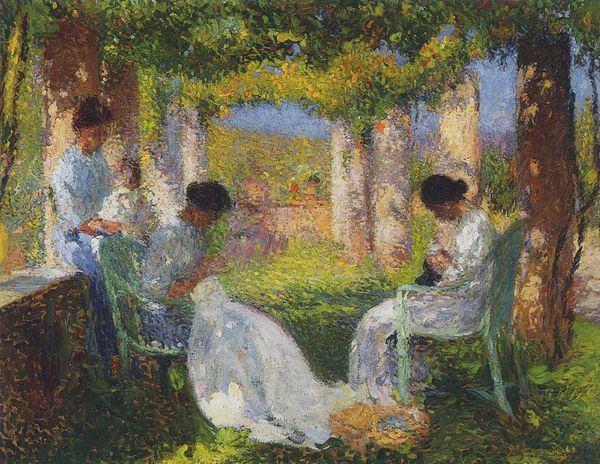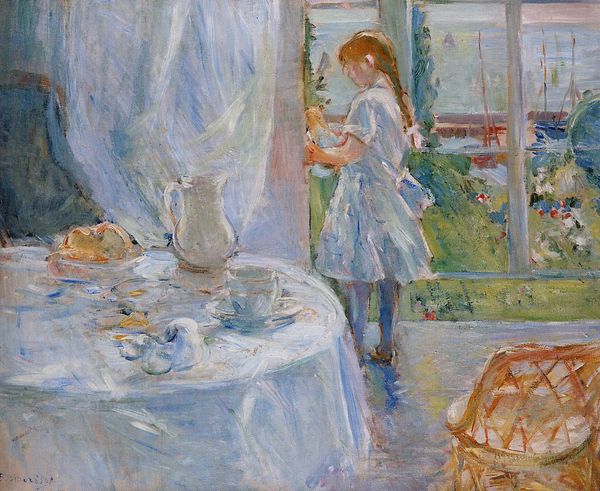
Copyright: Public domain
Editor: We're looking at "The Terre-Cuite Tea Set," also known as "French Tea Garden," painted by Childe Hassam around 1910. It’s an oil painting, likely done en plein-air, and it has a wonderfully serene and leisurely feeling to it. What do you see in this piece? Curator: Beyond the idyllic scene, I see a tableau ripe with questions about gender and leisure in the early 20th century. We see a woman situated firmly within the domestic sphere, engaged in a tea party—a ritual laden with social significance for women of that era. Notice how Hassam renders her almost subservient to the landscape? Editor: Subservient? I'm not sure I follow. Curator: Consider the visual weight. The vibrant flora surrounding her practically engulfs her form. It begs the question: is this a celebration of feminine tranquility, or a commentary on the limited spaces allotted to women? What does the 'French' element suggest about aspirations or perhaps even anxieties regarding European sophistication among the American upper class? Editor: That's a compelling point. I was focusing on the Impressionistic style and the beautiful light, but framing it within those social constraints gives it a completely new layer. Curator: Exactly! And consider how the very act of painting *en plein air*, though seemingly liberating, could be viewed through a feminist lens. Was it truly radical, or still operating within patriarchal structures of the art world, where women’s representations, even by sympathetic artists, were carefully mediated? Editor: I never thought about it like that. So much more to unpack than just a pretty tea party! Curator: Indeed. Hopefully this offers a starting point to delve deeper into the narratives embedded in even the seemingly simplest of scenes.
Comments
No comments
Be the first to comment and join the conversation on the ultimate creative platform.
